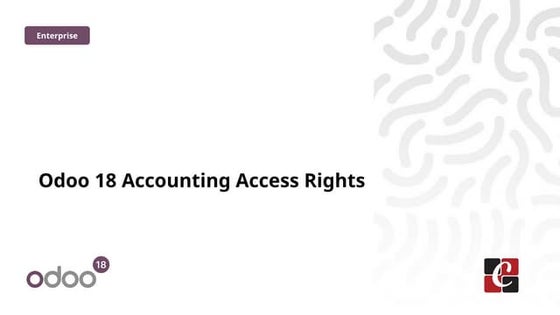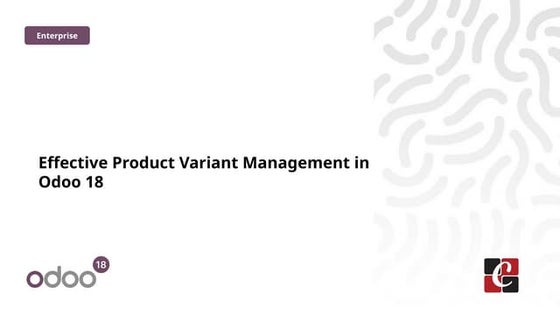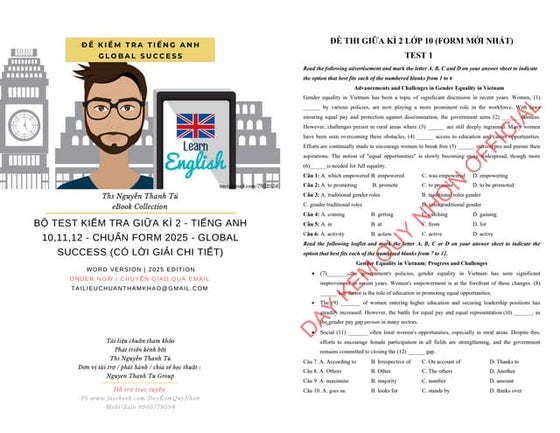How to Block and Tackle the Face (1).pptx
- 1. How to Block and Tackle the Face Authors:Barry M.zide, D.M.D,M.D.,and Richard swift
- 2. Introduction: ŌĆó Advent of laser facial surgery and aesthetic facial procedures has increased the demand for anesthesia. ŌĆó Choice of local anesthestic depends on length of procedure and how long post analgesia is desired.
- 3. Blocks: ŌĆó Set of eight blocks is done to anesthetize the entire surface of face. ŌĆó Infraorbital block ŌĆó Mental nerve block ŌĆó Supraorbital/supratrochlear/infratrochlear ŌĆó Dorsal nasal block ŌĆó Zygomaticotemporal ŌĆó Zygomaticofacial ŌĆó Great auricular ŌĆó V3 block
- 5. Infraorbital block: ŌĆó ANATOMY: ŌĆó Infraorbital foramen is located on the line from medial limbus 4 to 7mm below the orbital rim. ŌĆó Nerve travels through a canal or groove in orbital floor and exits through a foramen ,which faces downward and medially.
- 7. Technique: ŌĆó Transcutaneous nasolabial approach: ŌĆó This approach has a point of inj. Medial to upper nasolabial groove a few mm lateral to alar groove. ŌĆó The inj. Point for the infraorbital nerve is in the center of small triangle lateral to the alar rim and medial to nasolabial fold. ŌĆó Hold your left index finger on infraorbital rim,ask the patient to look straight ahead.holding the syringe like pen. Advance the needle to bone toward the designated point about 4 to 7 mm down from rim.
- 8. Area of anesthesia: ŌĆó Nose, cheeks ,lip and eyelid. ŌĆó Almost entire side of nose ,base of columella.
- 9. Mental nerve: ŌĆó ANATOMY: ŌĆó Mental nerve exits from a foramen below the apex of 2nd bicuspid. ŌĆó Variability of this foramen is 6 to 10mm ant. Or 6 to 10 mm post. To this. ŌĆó Exits foramen as two or three fascicles or group that divides into 2 or 3 fascicles ŌĆó 2 of the three branches supplies the pink lip and slightly below the vermilion to the labiomental fold ŌĆó One may supply skin lower down onto the chin.
- 10. Mental Nerve Block ŌĆó 3rd branch supplies the skin and chin below. ŌĆó This branching variability implies any transcutaneous external block to the mental foramen is unreliable.
- 11. Technique: ŌĆó It can be blocked submuscosally. ŌĆó Locate the 2nd bicuspid ŌĆó Place the needle tip in buccal sulcus near the base of tooth and inject. ŌĆó Nerve itself is not covered by muscle after it leaves the foramen,just a thin layer of mucosa and perineural sheath. ŌĆó Use thumb of one hand to pullout the lower lip,lateral to the lower canine tooth ŌĆó Nerve is visible in 85 % of time. ŌĆó Inject small amout under the mucosa.
- 13. Area of anesthesia: ŌĆó Lower lip down to the labiamental fold ŌĆó Chin pad and area lateral to it is not always affected. ŌĆó Entire chin must be numbed by 3 procedures ŌĆó Direct local infusion ŌĆó Inf. Alveolar nerve block at lingual ŌĆó Mental plus injection
- 14. Mental plus injection: ŌĆó To block chin, an end branch of mental nerve and terminal branches of mylohyoid nerve need to be blocked. ŌĆó After the mental nerve block pass the needle at least 1cm in front of the vestibule to the inferior mandibular border to block the rest of lower lip and chin pad.
- 15. Supraorbital/infraorbital/infratrochlear: ŌĆó ANATOMY: ŌĆó Supraorbital notch is palpable at supraorbital rim just above the medial limbus. ŌĆó Supraorbital nerve exits the foramen,transverses the lower corrugator muscles,and then branches. ŌĆó Nerve splits into 2 main branches,medial and lateral ŌĆó Medial branches proceed cephalad on the surface of the frontalis to supply the skin of the forehead medially and the ant.scalp for many centimeters.
- 17. ŌĆó Lateral branches under the frontalis muscle,supply the lateral ŌĆó Lateral branches are injected separately. ŌĆó Suratrochlear nerve supply the midforehead ŌĆó Infratrochlear nerve is the branch of the nasociliary nerve that runs along the medial orbital wall and leaves the orbit below the trochlea to supply the skin in medial eyelids,side of the nose above the medial canthus,medial conjunctiva,and lacrimal apparatus.
- 18. Technique: ŌĆó Block is performed by an injection along the supraorbital rim from lateral to medial. ŌĆó Stretch the eyebrow laterally and pierce the lateral part of the middle third of eyebrow. ŌĆó Aim the needle at the supraorbital notch,which is palpable. ŌĆó Other hand always on rim.and another 1cc is deposited as the needle advances toward and touches the nasal bones. Pt. can get some periorbital ecchymosis from this and thus should be warned.
- 19. Numb area: ŌĆó Forehead skin from the level of the superior temporal line or temporal fusion line almost to the mid line. ŌĆó Middle 50% of the upper eyelid skin ŌĆó Frontoparietal scalp between the midline and the superior temporal line,with anesthetic scalp area extending posteriorly to approx. the level of vertical plane drawn perpendicularly to the post. Edge of helical rim of ear.
- 20. Dorsal nasal block: ŌĆó ANATOMY: ŌĆó Ant. Ethmoidal branch of nasociliary nerve enters the anterior ethmoidal foramen to pass into cranial cavity. ŌĆó From there it runs forward in a groove in the upper surface of the cribriform plate beneath the dura. ŌĆó Through the slit lateral to the crista galli,nerve enters the nasal cavity hugging a groove on the internal surface of the nasal bones. ŌĆó First suppling the ant. Septal mucosa and lateral nasal wall anteriorly,it emerges as dorsal nasal nerve at the lower border of the nasal bone 6 to 10mm off the midline
- 21. ŌĆó Nerve exits in the small groove in the distal nasal bones and passes under the nasalis transervis muscle to supply some of the skin of the ala,vestibule and lip. Painful nasal tip injections can be avoided by this block.
- 22. Technique: ŌĆó Palpate the nasal midline ŌĆó Feel the end of the nasal bone using the thumb on one side and index finger on the other side. ŌĆó Nerve exits about 6 to 10mm from the midline of the nasal bones and 1 to 2 cc of injectate is sufficient for each side.
- 24. Numb area: ŌĆó Cartilaginous dorsum and tip
- 25. Zygomaticotemporal block: ŌĆó ANATOMY: ŌĆó Zygomatic nerve is the terminal branch of the maxillary trigeminal nerve,V2. ŌĆó It enters the orbit through the inferior orbital fissure. ŌĆó Zygomatic nerve branches into 2 terminal branches ŌĆó Zygomaticotemporal and zygomaticofacial ŌĆó ZYGOMATICOTEMPORAL nerve provides sensory innervation to the fan shaped area posterior to the lateral orbital rim extending into the hair.
- 27. ŌĆó Zygomaticotemporal nerve courses more lateraly in the orbit to pass through the foramen on the posterior cancave surface of the lateral orbital rim slightly above or below the lateral canthal level.
- 28. Technique: From above the patient the surgeon injects behind the lateral orbital rim with needle insertion at about 10 to 12mm behind and just below the zygomaticofrontal suture . By sliding the 1.5 inch needle along the mid posterior bony wall toward a point about 1 cm below the canthal level, that can be block easily during the pull out.
- 29. Numb area: ŌĆó Fan shaped area about a quarter of a circle ŌĆó Upper limit:area numb by the forehead block ŌĆó Lower limit:line from the lateral canthal area back to the hair and into the temporal scalp
- 30. Zygomaticofacial nerve: ŌĆó ANATOMY: ŌĆó Emerges through the foramen on the ant. Surface of the zygoma ŌĆó Branches exits from anterolateral aspect of the mallar bones just lateral to the infraorbital rim ŌĆó The foramen are the few mm lateral to the inferior orbital rim
- 32. Technique: ŌĆó Always done right after the zygomaticotemoral block ŌĆó Injected with the patient head slightly turned ŌĆó Anesthetic is deposited into area just lateral to the junction of the lateral and inf. Orbital rim
- 33. Numb area: ŌĆó Zygomaticofacial nerve provides sensation to cheek prominence and below
- 34. Great auricular nerve block: ŌĆó ANATOMY: ŌĆó Largest ascending branch of cervical plexus C2 C3 . ŌĆó 6.5cm down from the lower external ear canal ŌĆó Divides into end branches the supply the skin over the parotid and angle of mandible, most of the lower ear,and the skin over the mastoid process
- 35. Technique: flex the sternocleidomastoid muscle Mark the skin of upper ant. And post. Sternocleifomastoid borders with 2 parallel lines Draw a 3 line between the 2 lines in mid muscle Measure down 6.5cm from lower border of external acoustic meatus to the mid sternocleidomastoid
- 36. Numb area: ŌĆó Lower 1/3rd of the ear and the lower post auricular skin.
- 37. V3 nerve block: ŌĆó ANATOMY: ŌĆó Mandibular branch of cranial nerve V. ŌĆó Travels behind the pterygoid muscle about 1cm post. To the pterygoid plate ŌĆó Spinal needle traverses the skin and subcutaneous tissue passes through the post masseter,notch,and temporalis muscle to hit the pterygoid muscle origin at the pterygoid plate.
- 38. Technique: ŌĆó Find the sigmoid notch depression by palpation below the zygomatic arch ŌĆó This notch is 2.5cm ant. To the tragus ŌĆó Ask the patient to open the mouth widely ŌĆó Condyles slide can be felt on fingertips ŌĆó Ask the patient to close the mouth keep the finger in the notch ŌĆó Mark the middle of the notch ŌĆ£UŌĆØ ŌĆó Inject the local anesthesia into the skin with a small guage needle
- 39. ŌĆó Place a 22 gauge spinal needle in a 5 cc syring ŌĆó Inject the needle into the original dot ŌĆó And advance the needle straight in until it hits the pterygoid plate. ŌĆó Inject 3-4 cc
- 40. Numb area ŌĆó Bulk of the cheek ŌĆó Upper pre auricular and auriculotemporal hair regions
























































































